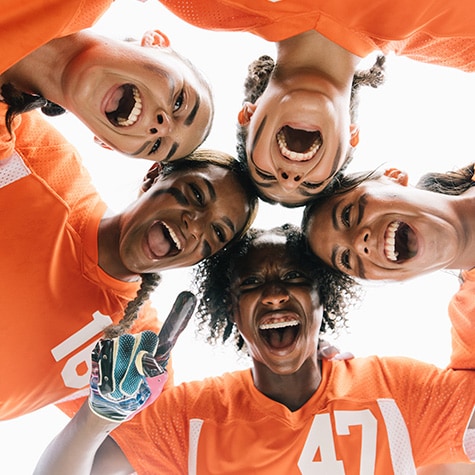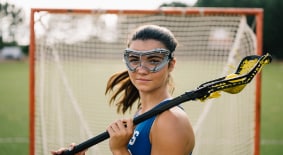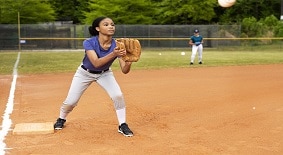Help Your Athlete Avoid Little League Elbow
Updated 3/11/22
Little League elbow might sound like a minor concern, but left unchecked, it can lead to major problems for your child, including painful injury and even bone deformity. Here’s what you need to know to keep them in the game.
If your favorite pitcher has set their sights on becoming the next Max Fried, the last thing you want to do is stand in their way. But when it comes to kids and sports, it’s important that coaches and parents keep tabs on playing time and intensity. Why? Because overdoing it can lead to injuries that may impact a child’s game for the rest of their life.
“We are seeing a lot of athletes with overuse injuries right now, especially Little League elbow,” says Armand Scurfield, MD, a Pediatric Sports Medicine Primary Care Physician at Children’s Healthcare of Atlanta. “Kids can get acute overuse injuries from doing too much too quickly, or they can get overuse injuries from doing too much for too long without adequate rest and recovery periods.”

Little League elbow is caused by repeated throwing without enough rest. During overhead throwing, the cartilage growth plate is placed under stress and becomes irritated. Little League elbow can affect athletes who throw or whose sport causes repetitive stress to the inside part of the elbow. These sports may include baseball, softball, tennis and golf. If left untreated, Little League elbow could cause an avulsion fracture or damage to tendons, ligaments and the growth plate. These could disrupt the normal growth of the elbow and cause deformity.
What are the signs of Little League elbow?
- Elbow pain that may be severe and sudden or occur gradually over time
- Swelling
- Redness
- Warmth
If your athlete complains of elbow pain—even low-grade pain—don’t ignore it or encourage them to play through it. “One of the worst things your athlete can do is try to throw through the pain of what they think is a minor injury and end up causing serious damage—that will cost them a much longer time away from the field,” says Dr. Scurfield.
Often, the injury can be treated at home. Try these steps first:
- Rest the arm from painful activities completely.
- Apply an ice pack wrapped in a towel or a cold compress to the elbow for up to 20 minutes several times a day to help reduce swelling or pain.
- Give anti-inflammatory medicines like ibuprofen to relieve pain and reduce swelling.
When should my athlete see a doctor for elbow pain?
If the pain doesn’t go away or gets worse after a few days, see a pediatric sports medicine specialist. Our Sports Medicine team is specially trained to recognize, diagnose and treat kids and teens with these injuries. We only treat kids and teens, and we understand how to get them safely back in the game, while also helping prevent long-term injury.
How is Little League elbow diagnosed and treated?
The doctor will take a medical history, examine your child and possibly get X-rays to diagnose Little League elbow.
Depending on the severity of the injury, the doctor may recommend:
- Avoiding throwing for four to six weeks.
- Starting a rehabilitation program with sports physical therapy.
- Having surgery (in rare cases for severe injury).
What if the injury comes back?
Keep in mind that recovery from Little League elbow can take time. If pain recurs when throwing is resumed, stop the activity immediately and call your child’s doctor. Continuing to throw may lead to complications and jeopardize your child’s ability to remain active in their sport. It’s important to follow your doctor’s instructions to avoid long-term problems.
The best way to avoid Little League elbow is to encourage kids to play smart by following these tips:
- Warm up. It’s important that kids warm up before throwing full speed. Start with soft throws that help stretch muscles and loosen joints, and gradually increase intensity.
- Throw correctly. Players should be taught the proper technique for throwing so they don’t put too much stress on their elbows, wrists or shoulders.
- Lay off the fancy stuff. Kids should not throw curveballs or other breaking pitches until after they have mastered fastballs and change-ups and are at least 13 to 14 years old.
- Limit the number of pitches. There’s a direct link between elbow injuries and the number of pitches a child throws. To help prevent injury, pitchers should follow the suggested maximum pitch counts and rest periods for their age, and parents should make sure coaches follow these guidelines.
- Don’t play year-round. Little League elbow is more common in baseball and softball players who play year-round and pitch for more than one team or catch when they aren’t pitching. Doctors recommend athletes play multiple sports and different positions to avoid repeating the same motions. Your athlete needs “active rest.’’ This means at least three to four months (including at least two to three consecutive months) with no throwing every year.
- Gradually return to throwing. After your athlete’s rest period from throwing, it’s important to ease back into throwing, usually over two to three weeks after a rest period or three to four weeks or longer after recovery from Little League elbow. There is an especially high risk of injury at the start of a new season when kids want to impress coaches and teammates.
Keeping Young Athletes Healthy

Sports medicine just for growing athletes
Because their bones, muscles and bodies are still growing, teen athletes need specialized care after a sports-related injury.
The Sports Medicine Program at Children’s is one of the only programs in the country dedicated exclusively to caring for growing athletes.
Armand Scurfield, MD, a Pediatric Sports Medicine Primary Care Physician, is board certified in pediatrics and sports medicine. His expertise lies in diagnosing and managing musculoskeletal injuries and concussions in growing athletes. He is a member of the American Academy of Pediatrics (AAP), the AAP Council on Sports Medicine and Fitness, the American Medical Society for Sports Medicine, and the Pediatric Research in Sports Medicine Society (PRiSM). He currently serves as the team physician for Kell High School and Wheeler High School.
This content is general information and is not specific medical advice. Always consult with a doctor or healthcare provider if you have any questions or concerns about the health of a child. In case of an urgent concern or emergency, call 911 or go to the nearest emergency department right away. Some physicians and affiliated healthcare professionals on the Children’s Healthcare of Atlanta team are independent providers and are not our employees.
Contact Us 404-785-KIDS (5437)




